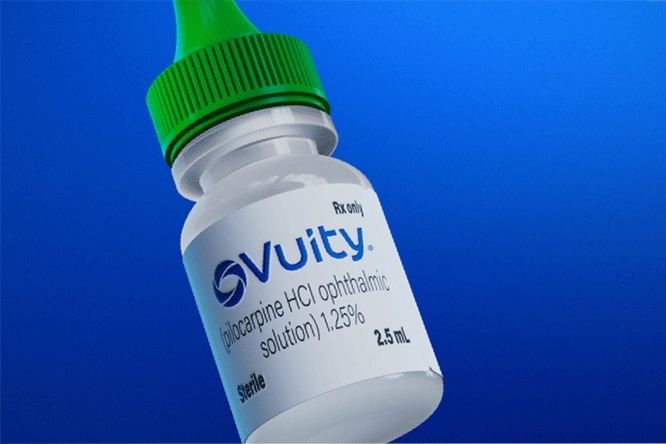
Dehydration is a common yet potentially serious condition resulting from excessive loss of body fluid. Maintaining adequate hydration is fundamental to countless physiological processes, making the recognition, prevention, and appropriate management of dehydration crucial across various healthcare settings.
Defining Dehydration and Identifying Its Causes
Definition: Dehydration occurs when the body loses more fluid than it takes in, disrupting the delicate balance of water and electrolytes necessary for normal cellular function and overall homeostasis. This imbalance can lead to a reduction in total body water, affecting blood volume, organ function, and electrolyte concentrations (such as sodium, potassium, chloride, and bicarbonate).
Dehydration is typically classified by severity:
- Mild Dehydration: Loss of 1-3% of body weight due to fluid loss. Often characterized by thirst and minor symptoms.
- Moderate Dehydration: Loss of 3-6% of body weight. Symptoms become more noticeable and may include dry mouth, reduced urine output, lethargy.
- Severe Dehydration: Loss of 6-10% or more of body weight. A medical emergency characterized by significant symptoms like low blood pressure, rapid heart rate, poor skin turgor, absent urine output, sunken eyes, and altered mental status.
Causes of Dehydration: Fluid loss from the body can occur through several routes. The most common causes include:
- Gastrointestinal Losses:
- Increased Fluid Loss Through Skin:
- Excessive Sweating: Due to strenuous exercise, high environmental heat (heat exhaustion/heatstroke), fever, or certain medical conditions.
- Burns: Significant fluid loss from damaged skin surfaces.
- Increased Fluid Loss Through Kidneys:
- Diabetes Mellitus: High blood glucose levels can cause osmotic diuresis (increased urination).
- Diabetes Insipidus: A rare condition where the kidneys cannot conserve water effectively.
- Certain Medications: Diuretics (water pills) prescribed for conditions like hypertension or heart failure increase urine production.
- Kidney Disease: Impaired kidney function can affect the body’s ability to concentrate urine or manage electrolytes.
- Decreased Fluid Intake:
- Illness: Nausea, vomiting, weakness, or altered mental status can reduce the desire or ability to drink.
- Lack of Access to Water: Common in emergency situations, during travel, or in certain environments.
- Impaired Thirst Mechanism: Can occur in the elderly or individuals with certain neurological conditions.
- Painful Mouth or Throat Conditions: Ulcers, infections, or inflammation can make drinking uncomfortable.
Understanding the specific cause is vital for guiding appropriate rehydration therapy and addressing the underlying condition.
Conditions Which Need Rehydration Therapy
While mild dehydration can often be corrected by simply increasing normal fluid intake (water, juice, clear broths), structured rehydration therapy, particularly using Oral Rehydration Solutions (ORS) or intravenous (IV) fluids, is necessary in several situations:
- Moderate to Severe Dehydration: Any patient presenting with clinical signs of moderate or severe dehydration requires prompt and specific rehydration therapy to restore circulating volume and electrolyte balance.
- Acute Diarrhea with Dehydration: This is a primary indication for ORT, especially in children. Even in the absence of severe dehydration, ORT may be initiated early to prevent its development and replace ongoing losses.
- Persistent or Severe Vomiting: While severe vomiting can prevent ORT, moderate vomiting may still allow for careful administration of ORS in small, frequent amounts. Severe, intractable vomiting typically necessitates IV rehydration.
- Heat Exhaustion or Heatstroke: Significant fluid and electrolyte losses through sweat necessitate rapid rehydration, often intravenously in severe cases (heatstroke).
- Certain Infections: Infections causing high fever or sepsis can lead to increased fluid requirement and losses, requiring rehydration therapy.
- Post-Surgical States: Patients who are NPO (nil per os) or have significant post-operative fluid shifts may require scheduled IV fluid administration.
- Burns: Patients with significant burn surface area experience massive fluid loss through the damaged skin, requiring aggressive IV fluid resuscitation based on specific burn protocols (e.g., Parkland formula).
- Poor Oral Intake Due to Illness: When illness prevents adequate oral intake for a prolonged period, particularly in vulnerable populations like the elderly or young children, rehydration therapy may be indicated to prevent dehydration.
The decision to initiate rehydration therapy, and the choice between oral and intravenous routes, depends on the severity of dehydration, the patient’s ability to drink and tolerate oral fluids, the presence of vomiting, and the underlying cause.
Oral Rehydration Therapy (ORT): Definition and Advantages
Definition: Oral Rehydration Therapy (ORT) is a simple, cost-effective, and life-saving treatment for dehydration, particularly that caused by diarrhea. It involves administering an Oral Rehydration Solution (ORS) by mouth. ORS is a specific mixture of water, electrolytes (sodium, potassium, chloride, bicarbonate or citrate), and a carbohydrate (typically glucose, but sometimes sucrose or rice starch).
The efficacy of ORS relies on the mechanism of sodium-glucose co-transport in the small intestine. Glucose molecules facilitate the absorption of sodium ions, and water follows passively along the osmotic gradient created by the sodium. This process allows the body to absorb water and electrolytes from the gut even when diarrhea is active, counteracting the fluid losses.
The World Health Organization (WHO) and UNICEF recommend a specific reduced-osmolarity ORS formulation (sodium 75 mmol/L, glucose 75 mmol/L, total osmolarity 245 mOsm/L) as it is more effective than older, higher-osmolarity solutions in reducing stool output and vomiting, while still providing sufficient sodium for replacement.
Advantages of ORT:
- High Efficacy: ORT is as effective as intravenous fluids for treating mild to moderate dehydration due to diarrhea in conscious patients who are not experiencing severe, persistent vomiting.
- Safety: It is non-invasive, carries minimal risk of fluid overload (as absorption is physiologically regulated), and avoids the risks associated with IV lines (infection, phlebitis).
- Simplicity: ORS can be prepared and administered easily in various settings, including homes, clinics, and hospitals, by trained healthcare workers or even family members.
- Cost-Effectiveness: ORS packets are inexpensive to produce and transport compared to IV fluids and IV equipment, making ORT a highly accessible intervention, especially in resource-limited environments.
- Reduced Need for IV Therapy and Hospitalization: ORT effectively manages most cases of dehydration from diarrhea, thereby reducing the burden on healthcare facilities by decreasing the need for IV lines and hospital admissions.
- Physiological Replacement: ORS provides both water and essential electrolytes (sodium, potassium), addressing the common deficits seen in dehydration, particularly from diarrhea.
- Maintenance of Enteral Feeding: Unlike IV therapy which often requires patients to be NPO, ORT allows for continued feeding (breastfeeding, milk, or food once vomiting stops), which is crucial for nutritional status and gut recovery, particularly in children.
Due to these significant advantages, ORT is the cornerstone of dehydration management for mild to moderate cases, especially in the context of diarrheal disease.
Rehydration Therapy According to Guidelines of Clinical Pharmacology and WHO
Providing rehydration therapy involves assessing the patient, choosing the appropriate route and fluid, calculating the required volume, administering it correctly, and monitoring the response.
Assessment:
- Assess the degree of dehydration (mild, moderate, severe) based on clinical signs (thirst, behavior, sunken eyes, tears, moistness of mouth/tongue, skin pinch/turgor, capillary refill time, pulse, breathing, urine output, presence of shock). Use age-specific assessment tools (e.g., WHO dehydration classification for children).
- Assess the patient’s ability to drink and presence of vomiting.
- Assess for signs of shock (rapid weak pulse, low blood pressure, cold extremities).
- In severe cases or specific conditions, assess electrolyte levels, blood glucose, and kidney function (e.g., urea, creatinine).
Choosing the Route and Fluid:
- Oral Rehydration Therapy (ORT):
- Indication: Mild to moderate dehydration in conscious patients able to drink, without persistent severe vomiting. Suitable for dehydration due to diarrhea, mild heat exhaustion, or poor oral intake.
- Fluid: Use WHO recommended low-osmolarity ORS. If commercial ORS is unavailable, homemade solutions can be used only in emergencies with strict adherence to recipes (though commercial ORS is strongly preferred).
- Intravenous (IV) Rehydration:
- Indication: Severe dehydration, signs of shock, unconsciousness or altered mental status preventing oral intake, persistent severe vomiting, inability to tolerate ORS, significant paralytic ileus, or specific conditions like severe burns or uncontrolled diabetes where rapid volume resuscitation or specific fluid types are needed.
- Fluid:
- Initial Resuscitation (especially in severe dehydration/shock): Isotonic crystalloids are the first choice to rapidly expand intravascular volume. Examples include 0.9% Sodium Chloride (Normal Saline) or Ringer’s Lactate solution. Avoid hypotonic fluids like D5W for initial volume resuscitation as they do not stay in the intravascular space effectively and can worsen hyponatremia in certain situations.
- Maintenance and Replacement (after initial resuscitation): Fluid type (isotonic, hypotonic, or containing dextrose) and electrolyte content are chosen based on ongoing losses, patient age, underlying condition, and measured electrolyte levels. Dextrose-containing fluids (e.g., D5 Normal Saline, D5 1/2 Normal Saline) may be used for maintenance to provide calories and prevent ketosis, or to provide free water.
Administering Rehydration Therapy:
- ORT Administration (Planing Volume and Rate):
- Deficit Replacement: Calculate the volume needed to correct the estimated deficit based on the degree of dehydration and body weight. WHO protocols for children often simplify this: for moderate dehydration, approximately 50-75 mL/kg over 4 hours; for severe dehydration (after initial IV resuscitation), 100 mL/kg over 4-6 hours. For adults, larger volumes are needed but the principle is similar.
- Maintenance Fluid: Calculate daily maintenance fluid requirements based on weight (e.g., 100 mL/kg for the first 10 kg, 50 mL/kg for the next 10 kg, 20 mL/kg for subsequent kg per day for children; fixed rates or formulas for adults).
- Replacement of Ongoing Losses: Estimate or measure ongoing losses (e.g., diarrheal stools, vomit) and add an equivalent volume of ORS. For children with diarrhea, a common guideline is 10-20 mL/kg of ORS for each diarrheal stool.
- Method: Give ORS frequently in small amounts (e.g., a teaspoonful or spoonful every 1-2 minutes) to minimize the risk of vomiting. Large gulps can trigger vomiting. Use a cup or spoon, not a bottle, especially in infants, to control the rate. Continue feeding (especially breastfeeding).
- Duration: Continue ORT until dehydration is corrected and the diarrhea stops or significantly reduces.
- IV Fluid Administration (Planing Volume and Rate):
- Resuscitation Phase (Severe Dehydration/Shock): Administer rapid boluses of isotonic crystalloid. For children, typically 20 mL/kg over 15-30 minutes. For adults, larger volumes (e.g., 1-2 liters) may be given rapidly and repeated if signs of shock persist, up to a certain limit, while carefully monitoring for fluid overload.
- Replacement Phase: Once shock is corrected and the patient is stable, calculate the remaining deficit and administer it over a longer period (e.g., 4-8 hours), combined with maintenance fluids and replacement of ongoing losses. The rate depends on the total calculated volume and the desired timeframe.
- Maintenance Phase: If unable to take fluids orally, administer maintenance IV fluids at a calculated rate.
- Electrolyte Addition: Potassium is usually added to IV fluids only after the patient has voided (indicating kidney function) and typically not in the initial resuscitation phase unless there is known severe hypokalemia with ECG changes. Sodium concentration depends on the chosen fluid and the patient’s serum sodium levels. Dextrose is added when maintenance fluid is needed or to treat hypoglycemia.
Monitoring:
- Monitor clinical signs of hydration status frequently during therapy (e.g., hourly in severe cases).
- Monitor vital signs (pulse, blood pressure, respiratory rate, temperature).
- Monitor urine output (may require urinary catheter in severe cases). Aim for restoration of urine output.
- Monitor body weight (if possible) as a measure of fluid balance.
- Monitor intake and output volumes.
- Consider laboratory monitoring of electrolytes, kidney function, and blood glucose, especially in severe dehydration, IV therapy, or patients with underlying conditions.
- Monitor for adverse reactions.
Recognizing ADR and Managing Electrolyte Replacement Therapy
Electrolyte imbalances can lead to severe health complications and are often caused by dehydration, diarrhea, vomiting, excessive sweating, or kidney disease. Electrolyte Replacement Therapy (ERT) is a crucial aspect of managing these imbalances, and healthcare professionals must be well-versed in recognizing Adverse Drug Reactions (ADRs) during ERT.
Oral Rehydration Salts (ORS): Composition, Preparations, Dosage Forms, Indications, and Process of Administration
The World Health Organization (WHO) has developed a new ORS formula that contains lower osmolarity and is more effective in treating diarrhea-related dehydration. The composition of the new ORS includes:
- Sodium chloride (3.5 g)
- Potassium chloride (1.5 g)
- Trisodium citrate (2.9 g)
- Anhydrous glucose (20 g)
Preparation:
- Dissolve the contents of the ORS sachet in 1 liter of clean drinking water.
- Stir until the powder completely dissolves.
Dosage Forms:
ORS is available in various forms, such as sachets, ready-to-drink solutions, and tablets. The most common form is the sachet, which is easy to transport and can be mixed with water when needed.
Indications:
ORS is primarily used for treating mild to moderate dehydration caused by diarrhea, vomiting, or excessive sweating. It is also beneficial for patients with cholera, dysentery, and gastroenteritis.
Process of Administration:
- Encourage the patient to drink small, frequent sips of ORS solution.
- For infants and young children, use a spoon or syringe to administer the solution slowly.
- Continue ORS administration until the patient’s symptoms improve or they are able to tolerate regular fluids.
- Electrolyte Replacement Therapy (ERT): Composition, Adverse Effects, Merits, Demerits, and Indications
ERT is a crucial intervention for patients with severe electrolyte imbalances, and it involves the administration of electrolyte solutions through various routes, including intravenous (IV), oral, and rectal. The composition of ERT solutions varies depending on the specific electrolyte imbalance and the patient’s condition.
a. Normal Saline (NS):
Composition:
- Sodium chloride (0.9%)
- pH: 5.0-7.0
- Osmolarity: 308 mOsm/L
Indications:
- Hypovolemic shock
- Hemorrhagic shock
- Hypotonic hyponatremia
Adverse Effects:
- Hyperchloremic acidosis
- Fluid overload
b. Dextrose Solution:
Composition:
- Dextrose (5%)
- pH: 3.5-6.5
- Osmolarity: 278 mOsm/L
Indications:
- Hypoglycemia
- Rehydration in patients with low blood sugar
Adverse Effects:
- Hyperglycemia
- Fluid overload
c. Dextrose Normal Saline (DNS):
Composition:
- Sodium chloride (0.9%)
- Dextrose (5%)
- pH: 5.0-7.0
- Osmolarity: 308 mOsm/L
Indications:
- Hypovolemic shock
- Hemorrhagic shock
- Hypotonic hyponatremia
- Hypoglycemia
Adverse Effects:
- Hyperchloremic acidosis
- Fluid overload
- Hyperglycemia
d. Ringer Lactate (RL):
Composition:
- Sodium chloride (0.67%)
- Potassium chloride (0.04%)
- Calcium chloride (0.03%)
- Sodium lactate (0.28%)
- pH: 6.0-7.5
- Osmolarity: 273 mOsm/L
Indications:
- Hypovolemic shock
- Hemorrhagic shock
- Hypotonic hyponatremia
- Metabolic acidosis
Adverse Effects:
- Hypocalcemia
- Fluid overload
e. Plasma Expanders:
Composition:
- Dextran 40 (6%)
- Dextran 70 (10%)
- Hydroxyethyl Starch (10%)
Indications:
- Hypovolemic shock
- Hemorrhagic shock
Adverse Effects:
- Anaphylactic reactions
- Coagulopathy
f. Dialysis Fluid and Electrolyte Solution:
Composition:
- Sodium (130-145 mEq/L)
- Potassium (0-4 mEq/L)
- Calcium (1.5-3.5 mEq/L)
- Magnesium (0.5-3.0 mEq/L)
- Chloride (95-110 mEq/L)
- Bicarbonate (25-40 mEq/L)
Indications:
- End-stage renal disease
- Acute kidney injury
Adverse Effects:
- Electrolyte imbalances
- Fluid overload
Recognizing Adverse Drug Reactions (ADRs) during Electrolyte Replacement Therapy
Healthcare professionals must be vigilant in recognizing ADRs during ERT, as they can lead to severe complications. Some common ADRs include:
- Hypernatremia (high sodium levels)
- Hyperkalemia (high potassium levels)
- Hypocalcemia (low calcium levels)
- Hyperchloremic acidosis (high chloride levels and low bicarbonate levels)
- Fluid overload
Conclusion
Electrolyte Replacement Therapy is a vital intervention for patients with severe electrolyte imbalances, and healthcare professionals must be well-versed in recognizing ADRs during ERT. This guide provides a comprehensive understanding of Oral Rehydration Salts and various types of ERT, including their compositions, dosage forms, indications, and administration processes. By following these guidelines, healthcare professionals can effectively manage electrolyte imbalances and ensure patient safety.







